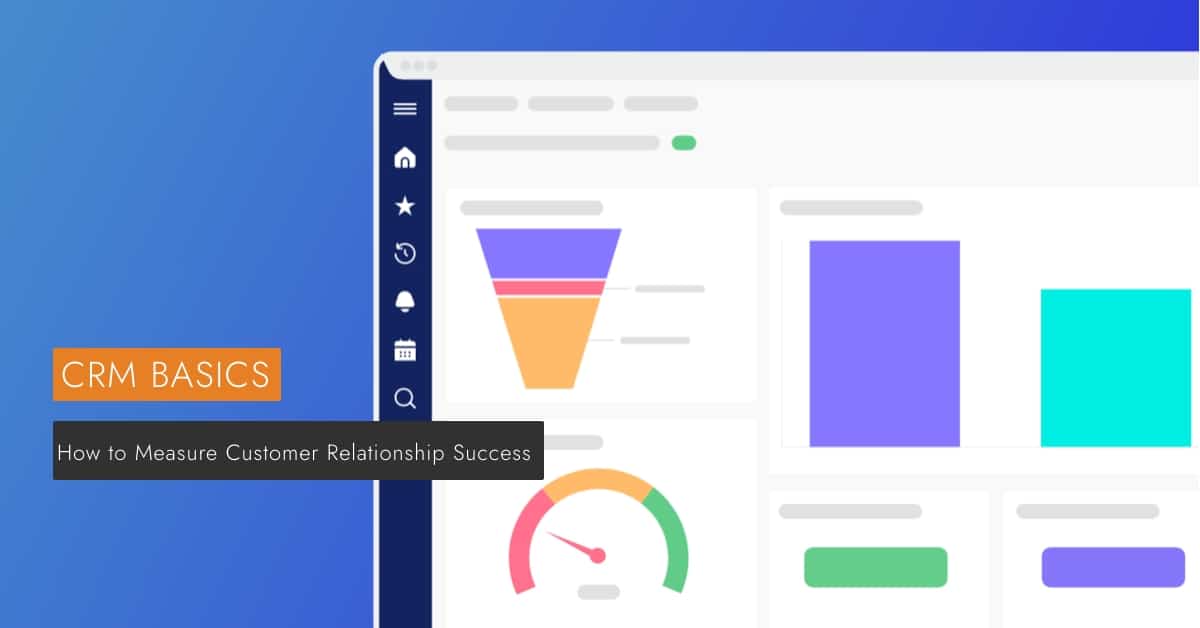How to Measure Customer Relationship Success

Customer relationship management (CRM) systems are used to track customer data, improve customer service, and increase sales. But how do you know if your CRM system is effective?
To figure out whether your CRM system is working, you first need to measure how well it is performing. But measuring CRM success can be tricky. If you don’t track the right metrics, you won’t know whether your system is effective.
So, we’ve created a list of the top six metrics you must track to measure CRM success.
1. Customer Churn Rate
Customer churn rate is the same as customer attrition or customer turnover. It shows the number of customers that your business loses over a particular period. This percentage can be calculated on a monthly, quarterly, or annual basis. Among the CRM performance metrics, this is the easiest to carry out.
If you want to determine the customer churn rate in one month, you will count the number of customers you had at the beginning of the month and those that you have at the end of the month. Find the difference between them and divide the result by the starting number.
For example, you have 200 customers at the start of November and 175 by November 30th. Subtract 175 from 200, which is 25. Then, divide 25 by 200 and convert it to a percentage—In this case, the customer churn rate is 12.5% (0.125). This means that you’re losing 12.5% of the customers that you’re adding.
2. Customer Retention Cost (CRC)
Do you know the significance of customer retention? Research indicates that around 80% of a company’s revenue is obtained from 20% of existing buyers. Therefore, the efforts of customer retention should outweigh the efforts of customer acquisition. Calculating this crucial metric can be done in two steps:
- Add the total expenditure for customer retention in the company: staffing, software/tools, marketing expenses, and customer training and loyalty programs.
- Divide your number of retained customers by the total amount of customer retention costs.
You now know how much retention costs per customer.
3. Expansion Revenue
This is the revenue generated by an organization from the existing buyers through cross-selling and upselling. It is essential to increase the number of existing customers because a huge chunk of the future revenue of a business will be generated from the existing customer base.
To calculate this metric, you should divide new revenue from the cross-sells and upsells in one month by the revenue from the same sources at the end of the previous month. The result is the expansion rate of your business.
4. Upsell Rate
Upselling is the ability to convince customers to spend more than they had intended originally. That said, the upsell rate is the number of customers that you convince to purchase items they weren’t intending to buy originally.
Having a good CRM can help to improve your upsell rate by predicting which leads have a high likelihood of upgrading or purchasing other products.
5. Renewal Rate
Renewal rate is a great indicator of the growth of a company and it is critical in subscription-based businesses. It indicates the rate at which the existing customers are renewing their relationship with your organization.
For instance, if your company has 100 customers at the beginning of 2021 and only 92 renew their contracts, then the renewal rate will be 92%. It is an easy and direct metric to measure customer relationship success and shows if your business is providing long-term value.
6. Customer Effort Score
Customer effort score, also known as CES, is a significant strategy of customer satisfaction measurement. It measures how much customer effort is required to have their issues resolved. The higher the effort that a customer applies, the lower their level of satisfaction will be. A company should use this score to get a detailed picture of how satisfied its customers are.
Final Thoughts
Companies should always measure their success using these metrics. After all, a company cannot exist without customers. The next step is making actionable goals to improve your low metrics or to sustain your high customer relationship success rate.
There are many ways to improve your customer relationship success, and the most straightforward way to gain insight is to ask for direct feedback. If you want to know what your customers really think about your business, send them surveys and read their reviews.
